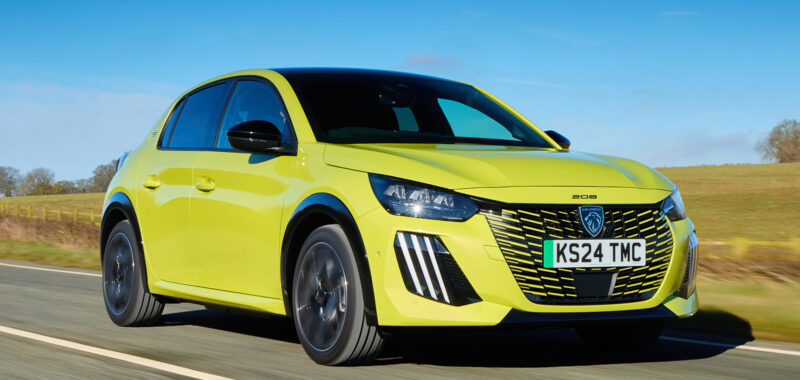This facelifted model actually brings quite a lot of changes – if you look closely and pick the right version.
Visually, the big change is to the front end. The current-generation 208 was one of the first models to adopt the three-claw mark light signature that now features on a lot of Peugeots, but for this update it has actually been toned down a bit, with the LEDs moving down from the headlight and into the bumper.
There are a number of new alloy wheel designs and the grille – ornamental on this electric version, of course – has been redesigned with body-colour elements.
Overall, it’s a handsome and well-proportioned machine – arguably the French firm’s best small car effort for years.
The e-208’s CMP (Compact Modular Platform) underpinnings have been carefully conceived to accommodate an electric motor and substantial battery pack without significant re-engineering.
The car’s lithium ion battery pack is housed beneath the floor in what is effectively an ‘H’ pattern and comes in two varieties, 50kWh (47kWh usable) and 54kWh (50.8kWh usable). That’s not a huge difference, you might think, but the real benefit from the latter comes in the efficiency of the battery-motor combination.
You see, the 50kWh is the old set-up and comes with a 134bhp motor and a WLTP range of 225 miles. Despite having a more powerful, 154bhp motor, the 54kWh version can do 248 miles, according to the WLTP test. Annoyingly, you can only have the upgraded mechanicals when you opt for the range-topping GT trim. At least you get a heat pump as standard.
Overall, the battery packs adds an extra 300kg to the 208 compared with a typical piston-engined model, but efforts have been made to locate the extra mass as low as possible and to keep it within the wheelbase.
A further neat touch is that a heat pump for the air conditioning and heating system is standard, which should benefit the efficiency in winter.

